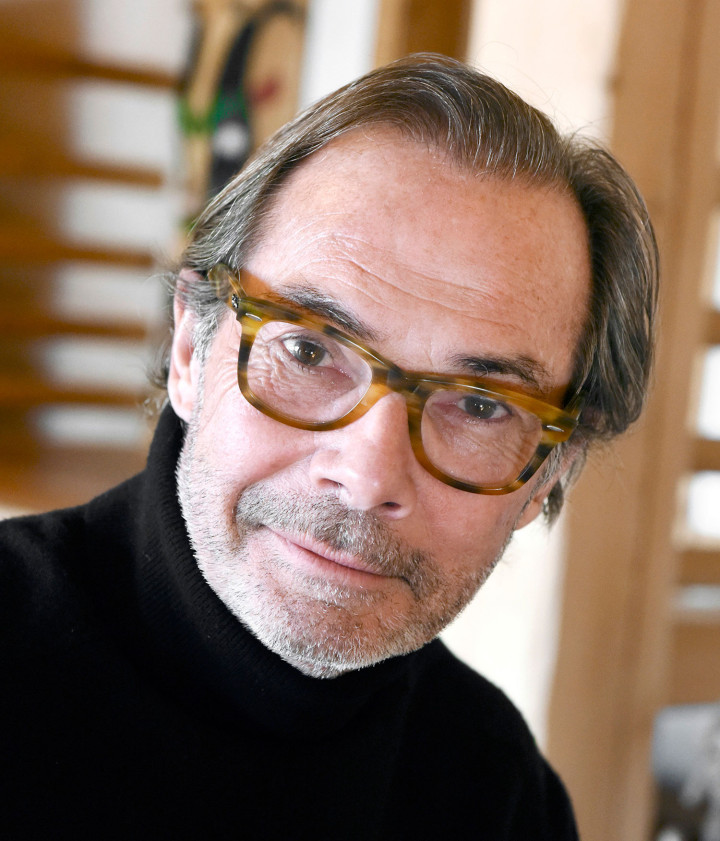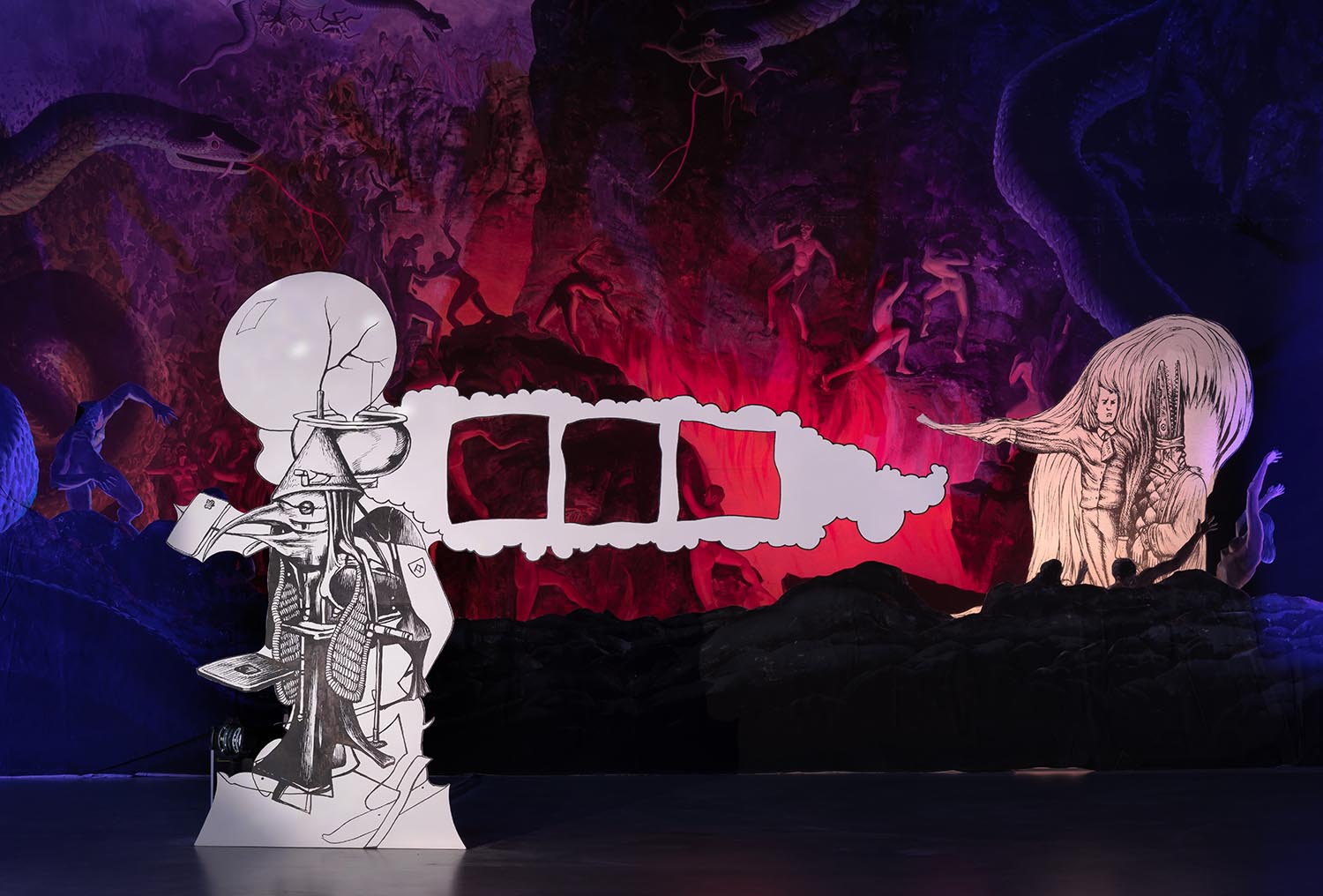On the occasion of the group show “El Cuor No Se Vende” at the Historical Archives Museum of Hydra, Flash Art chief editor Gea Politi spoke to Didier Guillon, president of the Valmont Group and the exhibition’s curator.
LVMH and other brands opened their art foundations years ago. Does the decision to curate art shows come from a need to expand the idea of “branding” within the Valmont world?
Within the Valmont Group, art is a true pillar of our identity. Brands can no longer be focused on themselves. They must build bridges to other universes, integrating new trends and opening up new horizons, whether they are alien or familiar to them. Familiar, because art has asserted itself as a common thread within the Guillon family for many years. It is a history that has its roots in Paris, where Charles Sedelmeyer, born in Vienna in 1837, father of my great-grandmother, opened his own art gallery.
Since I was twelve I have been striding arm in arm with my father to attend exhibitions and the great museums of Madrid, London and New York. It is this endless passion that I wish to honor through the Valmont Foundation; an entrepreneur cannot measure up in terms of patronage unless he is passionate about the projects that he supports. Each artist, each work, is chosen with the heart and not with speculative intentions.
How will you handle social networks when it comes to curatorial projects? Will you connect them to the brand?
Our purpose is to share with a large public this passion for art and beauty. That’s why I am endlessly searching for unusual, exceptional places for my exhibitions. I wish to give visitors the chance to live a unique moment. Beauty? I share it both through the works displayed and the venue that accommodates them.
The Valmont Foundation is the fourth pillar of the Valmont Group, which includes the three brands Valmont, L’Elixir des Glaciers and Il Profvmo. So, the Group communicates around the brands and the exhibitions, consistently linking art with beauty, since they represent its identity. Therefore, social networks are useful tools to share with my clients — but also with a large community — my passion for art, and to promote the exhibitions and the artists I love. I can also encourage a large public to discover unusual places, like Hydra this year, or the Palazzo Tiepolo Passi along the Canal Grande in Venice, where we were last year with “Dialogue of Fire” and where we will return in 2017 with a new exhibition.
Facebook, for instance, is a true communications tool for exhibitions. The Internet allows people who don’t have the opportunity to visit the magical places where we do our exhibitions to share these a unique experiences through photos and videos.
Do the artists invited need to relate somehow to your brand? Or is the selection connected to the world of Valmont in some way?
The artists have all been chosen with my heart and have no direct relation to the three brands of the Valmont Group. It is from within the Valmont Foundation that the artistic universe of the Group emerges. So, the bond with the artists is, first of all, affective and emotional, and it’s exactly to express such a peculiar and precious bond that the title of this summer’s exhibition is “El Cuor No Se Vende.” Simply because the heart is not for sale! The choice of the works is mainly based on their aesthetic, beauty-inspiring dimension rather than on aggressive themes with sexual, political or religious meanings.
The title “El Cuor No Se vende” suggests a critique of the state of the art market today. What is your position in this regard?
The title of the exhibition reflects my passion and expresses a pure, ethical approach, driven by the asthetic realm where art and beauty meet, and where taste and freedom are the only protagonists. These few, powerful Venetian words fight speculation, which is omnipresent in an art market dominated by trade fairs, VIPs and famous galleries. I seek the unpredictable, the original, through the works of young artists such as Quentin Garel, Tom Powell, Isao (Llorens Ishikawa) and Iliodora Margellos.
Their works have conquered my heart because they are far from any speculation and seem to be joined by a common bond. A bond made of a creative ethics, of a true and indisputable return to craftsmanship in the artistic work, and of a certain disregard for any need for creative justification. By choosing to display the works of such artists, I give them the chance to be known at an international level, and that is the strength and the difference of the Valmont Foundation’s exhibitions.
Do you feel brands should support artists rather than the market itself in order to make the art system more sensitive to certain social concerns?
The Valmont Foundation supports artists whose works embody beauty, as for instance the work of Bénédicte Blanc-Fontenille. Her work speaks about the frailty of the human being and the fact that this frailty is a motor that stimulates change and accomplishment. Other artists raise questions related to environmental issues.
There are no Koons or Murakamis in this show — meaning you felt no need to invite very established names. Who are some of the new talents you are supporting?
The selection of the works displayed at the Historical Archives Museum of Hydra from July 1 to August 31, 2016, breaks away from the artistic production of the last quarter of a century that has been so adored by the curators of big exhibitions. I chose young talents like Quentin Garel, a young Parisian who is a virtuoso of draftsmanship and carving. Like an architect or a cabinet maker, he assembles pieces to create skulls, heads, a bestiary in wood, bronze, iron or porcelain. His technique makes room for poetry, and his animals become contemporary, even conceptual sculptures that speak without forgetting that the real subject is man. Iliodora Margellos is a young artist who embodies a mix of American, Swiss and Greek culture. She makes sculptures from recycled materials and fabrics, creating a colorful and original universe that gives free rein to the visitor’s imagination.
With “El Cuor No Se Vende,” I introduce the works of sixteen artists coming from very different cultures: from Japan, Spain, France, Italy and Greece. All these works offer rich cultural contrasts and lead the visitor to wonder about mankind, the world, the environment and the quest for beauty.


